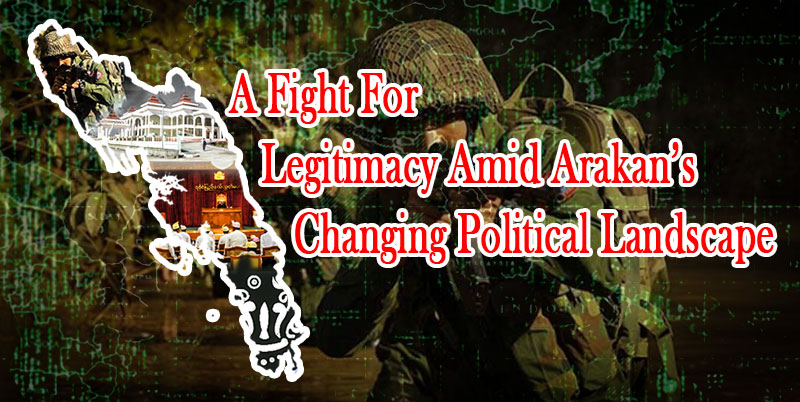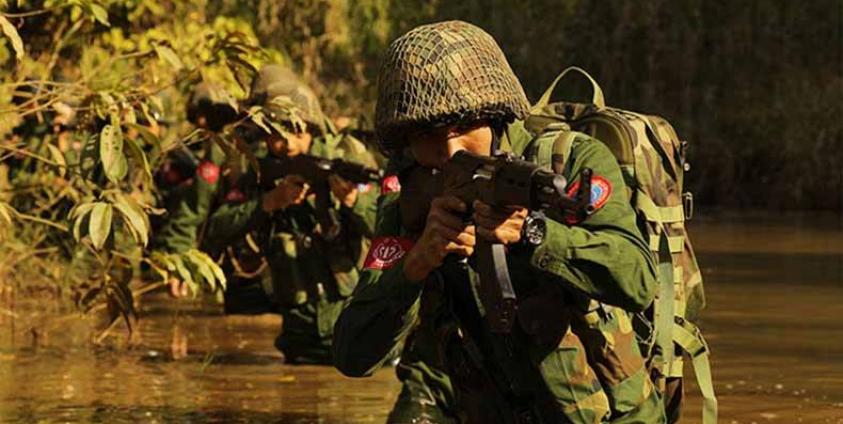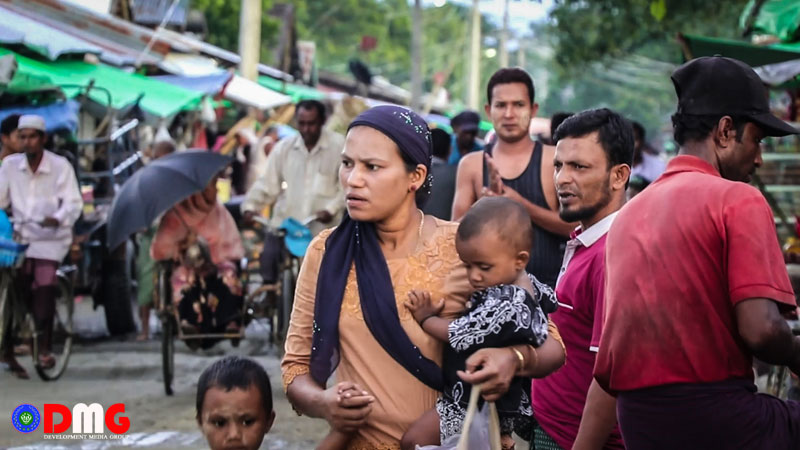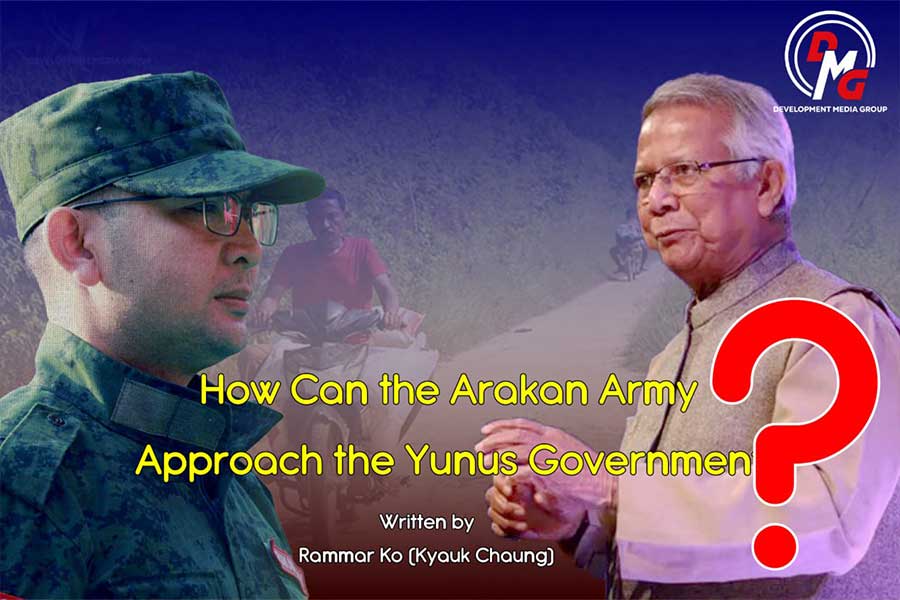A Fight for Legitimacy Amid Arakan’s Changing Political Landscape
Since Myanmar is a weak State, it is more susceptible to being substituted in reality or in people’s minds by the likes of the Arakan Authority, an interim governance body forged by the AA’s political wing, the United League of Arakan (ULA). On June 19, Arakan News published a story about the AA-affiliated Authority settling a land dispute issue ...
25 Jul 2020

July 25, 2020 / DMG
Arakan, a tiny coastal land fenced in by the Arakan Yoma mountain range to the east and neighboured by Bangladesh and the Bay of Bengal to the west, is on fragile political ground due to conflict between the Myanmar armed forces and the insurgent Arakan Army. As of between December 1, 2019 and April 15, 2020, prominent side effects of the hostilities include more than 160,000 people displaced (IDPs), 406 injured and 336 deaths in Arakan and Chin states, according to the local NGO Burma Monitor. Other tangible consequences include a lingering internet shutdown, restrictions on domestic and international media and humanitarian assistance, governance breakdowns and travel limitations, while intangible repercussions are numerous, from the growth of hatred and distrust toward the government and military to feelings of insecurity, and uncertain futures politically, economically, and societally.
Arakan has long lived under different tyrannical regimes, since the 1962 military coup by General Ne Win and arguably through President U Thein Sein’s military-backed administration (2011-16). Successive governments wielded despotic powers unheeding of the rule of law, and procedural and substantive accountability. Today both State and non-State actors (the latter being primarily the Arakan Army) compete for power over populations and territories in Arakan State, particularly in the northern half of the region.
The Functions of State
In his 2004 book “State-Building,” the prominent political scientist Francis Fukuyama breaks down the two dimensions of the State, calling them ‘Strength of the State’ and ‘Scope of the State,’ while the latter is further divided into three sub-sectors of functionality: 1) minimal functions 2) intermediate functions and 3) activist functions. In Fukuyama’s view, the three categories of State functions are as follows:
|
Minimal functions: Functions |
Intermediate Functions |
Activist
|
|
1. Providing pure public goods policy 2. Defense, law and order distribution 3. Property rights 4. Macroeconomic management 5. Public health 6. Improving equality 7. Protecting the poor |
1) Addressing externalities 2) Education, Environment 3) Regulating monopoly 4) Social insurance 5) Insurance, financial regulation 6) Overcoming imperfect education |
1) Industrial 2) Wealth
|
Myanmar (then Burma) may have had a large State scope under the Burma Socialist Programme Party (BSPP) government (1962-88), but its scope was trimmed back under the two decades of military rule that followed (1988-2010). The post-2010 governments are still trying to address State deficiencies in all three sectors. More importantly, the strength of the State in Myanmar is comparatively faint. Even the main law-enforcing actor, the Myanmar Army, is able to master just 50% of the territory ostensibly under its domain.
Being the second-poorest region in Myanmar after the contiguous Chin State, with nearly 70% of the population living in poverty, the people of Arakan harbour resentment toward the Nay Pyi Taw government. Two consecutive general election victories for Arakan State’s leading ethnic political party were followed by a rejection of their claim to have earned the right to form the state government. Historical grievances are made more galling by material poverty, with all these factors boosting the Arakan Army and the nationalist revolution it has vowed to shepherd by waging a war that is now more than 18 months old.

Since Myanmar is a weak State, it is more susceptible to being substituted in reality or in people’s minds by the likes of the Arakan Authority, an interim governance body forged by the AA’s political wing, the United League of Arakan (ULA). On June 19, Arakan News published a story about the AA-affiliated Authority settling a land dispute issue in Ponnagyun Township between two brothers. The case was worked out within a week and the two parties seemed to be satisfied with the resolution proposed by the Arakan Authority, according to the report.
A day earlier, on June 18, a local monk from Mrauk-U told RFA: “As far as I see and hear, the public does not go to the police for their criminal cases and I am told that AA is solving the cases. So, I find only AA and Myanmar military governance while the NLD government is nearly invisible. This started to happen soon after the AA announcement to install a governing mechanism.”
Drug rehabilitation programmes administered by the AA are also appreciated by local populations, the RFA story added.
The NLD administration, meanwhile, is seeking to rehabilitate the governing mechanism while the military is calling for more effective rule, possibly a form of martial law in Arakan. On the ground, however, the power of State to non-State actors is increasingly shifting to the latter. Still, it is difficult to know to what extent the Arakan Authority is acting in a manner befitting of the abovementioned Fukuyama chart on State scope and strength.
AA Revolution and the Muslim community in Arakan
It is interesting to consider how the Muslim community in Arakan State has reacted to the AA’s armed revolution and the changing political calculations in Arakan. Due to the 2017 “clearance operations” by the Myanmar military, around 700,000 Muslims fled to Bangladesh, a majority of them also stateless. With Myanmar facing a lawsuit under the Genocide Convention before the International Court of Justice (ICJ) in December 2019, State Counsellor Daw Aung San Suu Kyi described the AA movement as such:
“Currently, an internal armed conflict is going on there — between the Arakan Army, an organised Buddhist armed group with more than 5,000 fighters, and the regular Myanmar Defence Services. None of the speakers yesterday made any reference to this. The Arakan Army seeks autonomy or independence for Rakhine — or Arakan as it was called — finding inspiration in the memory of the historic Kingdom of Arakan.”
The State Counsellor did not directly link the two, but Buddhist and Muslim discontent is currently intermingling on the ground and this dynamic will likely make matters more complicated in the future. Even now, some Muslims who remain in northern Arakan are sheltering in AA-dominant areas. An Arakan Muslim from Pauktaw Township recently told me over the phone: “Personally, I support the Arakan Army 100% and in my village, it is 50-50.” When asking about the AA’s governing potential in his area, he said: “I am ready to collaborate with them if needed.”

Despite communal violence between the two communities in 2012, the arrival of the Arakan Army and its national revolution is also clearly appealing to some members of the Muslim community in Arakan. This could be in keeping with the notion espoused in a Sanskrit treatise on statecraft, the Arthashastra, known popularly as the equation, “The enemy of my enemy is my friend,” but more specifically we can see bonds forged in the spirit of the Arakan Army slogan that in Arakan, “We are all Arakanese,” regardless of race or ethnicity. The perceptions of Rakhine Buddhists toward the Muslim community have also shifted into more positive territory compared with 2012.
The Question of Legitimacy
The ULA/AA is still considered a terrorist entity by the Myanmar government. These organisations, on the other hand, claim to be the rightful claimants to the struggle for greater autonomy for the Arakan region. Amid these two competing perspectives, a future resolution of the conflict is hard to envision. At a January 2019 press conference held by the Tatmadaw, General Tun Tun Nyi said the State Counselor had ordered the military to eradicate the AA, not unlike its stance toward the Arakan Rohingya Salvation Army (ARSA).
At present, the ULA/AA has superior internal legitimacy in Arakan compared with the Myanmar military, while the latter has clear dominance in terms of conventional military strength. The question the government and Tatmadaw must ask itself is how many troops it is willing to commit, how much bloodshed it will tolerate, in its efforts to defeat an idea. Likely then the question will become not whether to recognise the AA or not, but rather how to conciliate it and its followers in Arakan.
About the Author: Kyaw Lynn is a post-graduate student studying Political Science at the University of Yangon. He is also the chairperson of the Political Science Association (University of Yangon) and one of the founders of Amnesty Arakan Team (AAT).




















